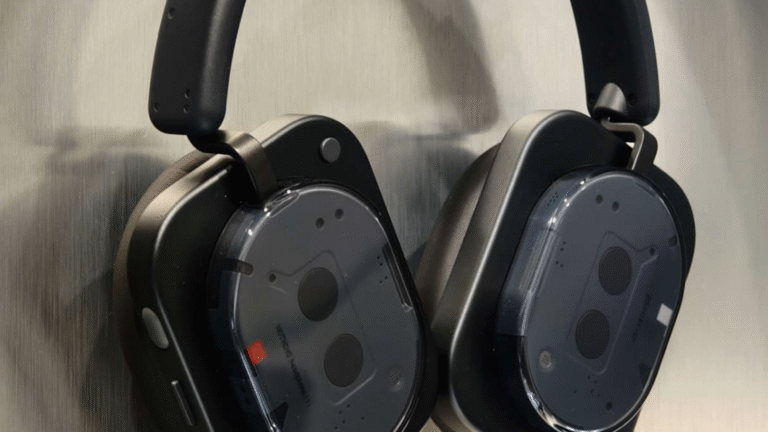Smartphones play a crucial role in our daily life, with over 7 billion users worldwide relying on these devices for communication, work, entertainment and creating content to make money. Despite rapid innovation and aggressive marketing, many buyers fall for common myths that can lead to poor purchasing decisions and wasted money. Understanding the facts behind these myths can help consumers make smarter choices. Here are five widespread smartphone misconceptions you should know before your next purchase.

Myth 1: More RAM Means a Faster Phone
RAM in smartphones acts as short-term memory for running apps and processes. While the amount of RAM in phones has grown, from 6GB to as high as 16GB in some models, having more RAM does not automatically make a phone faster. Instead, RAM allows the phone to keep more apps active simultaneously without reloading them from slower storage. The speed of the RAM and the efficiency of the phone’s processor play a bigger role in overall performance. A phone with a powerful processor and optimised software will often outperform one with excessive RAM but weaker hardware. Therefore, prioritising processor quality and software efficiency is more important than simply choosing the phone with the highest RAM.
Also read: Love robots? 5 shows where humanoid robots are unexpected heroes
Myth 2: Flagship Chips are Essential for Everyday Use
High-end processors like Snapdragon 8 Elite or Apple’s A18 Pro often receive attention for their raw power and gaming capabilities. However, most users will find mid-range processors such as Snapdragon 7 series or MediaTek Dimensity 8000 series to be more than sufficient for daily tasks like browsing, messaging, and streaming. Real-world performance depends heavily on software optimisation rather than just processor speed. Phones with mid-range chips and well-tuned software can provide smooth user experiences and better battery management. While flagship processors offer advanced AI and camera functions, these features rarely impact the average user’s daily routine. Instead, focusing on how well the phone performs in everyday tasks and receives updates should guide your choice.
Myth 3: More Megapixels and Multiple Cameras Guarantee Better Photos
Many buyers believe that a higher megapixel count or multiple cameras automatically produce superior photos. In reality, photo quality depends on sensor size, lens quality, and image processing algorithms more than just the number of lenses or megapixels. Phones may include extra cameras like macro or depth sensors that serve little practical use and primarily boost marketing appeal. A well-executed dual-camera system often delivers better results than cluttered multi-camera setups on budget phones. Also, very high megapixel counts, such as 200MP, use pixel binning to combine pixels for better low-light shots, which results in photos that are smaller in resolution than the sensor suggests. Exceptional models like the Samsung Galaxy S25 Ultra use high-resolution sensors to enable features such as detailed cropping and 8K video, but these benefits depend on good overall camera design, not megapixels alone.
Also read: India’s digital job scene to expand in 2025 with rise in AI and data-driven roles
Myth 4: More Hardware Specs Mean Better User Experience
Specifications like high refresh rate displays, fast/rapid charging, and many camera lenses look impressive, but don’t always translate into a smooth user experience. Software optimisation, battery management, thermal control, and regular software updates contribute significantly to how well a mobile phone performs day-to-day. A device with top-end specs but poor software tuning can feel slower and less reliable than a mid-range phone with efficient software. When choosing a phone, pay close attention to real-world reviews and the manufacturer’s update policies rather than just the spec sheet.
Myth 5: The Purchase Ends the Journey
Specs and features often dominate buying decisions, but a critical aspect lies beyond the initial unboxing: after-sales support.
Even the most advanced smartphones can develop faults or require repairs. Unfortunately, some brands have inconsistent warranty policies or limited service infrastructure. Users might face long waits for repairs, unavailability of parts, or out-of-pocket expenses for manufacturer faults.
Issues like screen defects or battery problems can turn an otherwise good phone into a costly burden if support is lacking. Researching a brand’s reputation and the quality of its customer service is essential for a smooth ownership experience.
Also read: How to quietly limit someone on Instagram without blocking, unfollowing, or causing drama
Things You Should Consider
Smartphone buyers should look beyond marketing claims and focus on the real factors that affect their usage experience. More RAM doesn’t mean faster speed, flagship processors are not necessary for most, megapixels aren’t the sole measure of photo quality, and after-sales support matters as much as hardware specs. Consumers can avoid overspending and disappointment by understanding these truths and selecting devices that truly fit their needs. The key is to balance hardware capability, software optimisation, and reliable support rather than chasing every flashy spec on the market.




















